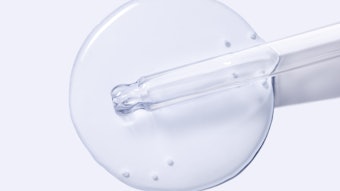
Collagen is the most abundant protein in the human body, found in bones, muscles, tendons and of course, skin. According to MedicalNewsToday, this hard, insoluble and fibrous protein makes up one-third of the protein in the human body. It provides strength and structure—essentially, holding us together.1 In fact, according to one source, collagen is derived from the Greek work kólla, which means glue.2
With age, especially after menopause, and exposure to environmental stressors such as smoking and/or UV exposure, collagen production slows. This causes not only wrinkles but also the weakening of muscles, tightening of joints and even gut issues.
To replenish this lost component of youth, many consumers turn to nutrients and topicals to either help produce collagen in the body, such as vitamin C, proline, glycine, copper and a multitude of cosmetic actives, or to supplement collagen using collagen itself. A recent report by Healthline2 notes how, in recent years, two types of collagen, hydrolyzed and gelatin, have gained popularity as both nutritional supplements and as ingredients in shampoos and body lotions.
The collagen used in skin care is commonly extracted from mammalian or fish skin, i.e., marine collagen. It has attracted interest thanks to its natural humectant and moisturizing properties.3 In addition, vegan collagen can be produced using genetically modified yeast and bacteria,4 which according to some sources, lowers the risk of allergic reaction.5
Marine collagen in particular can be derived from fish skin as well as by-catch marine organisms such as jellyfish, sharks, starfish and sponges.6 It has grown in popularity for various reasons; from religious concerns over porcine sources, and a negative association (unfounded) with Bovine Spongiform Encephalitis (BSE) or “mad cow” disease, to its sustainable sourcing as a by-product of the fishing industry.
In fact, Mordor Intelligence reports the global market for marine collagen is projected to grow at a CAGR of 7.35% from 2020 to 2025, thanks especially to demand from the nutrition sector.7 In addition, the firm notes, based on continued demand for marine collagen in skin care cosmetics, key companies are increasing investments in R&D to innovate novel marine collagen products.
Continue reading about the skin benefits of marine collagen in our Digital Magazine...
Rachel Grabenhofer is the managing scientific editor of Cosmetics & Toiletries, Skin Inc.’s sister brand for cosmetic chemists. She’s a member of the Skin Microbiome Council and Society of Cosmetic Chemists, and for several years, led judging panels to honor the best ingredients in cosmetics.











